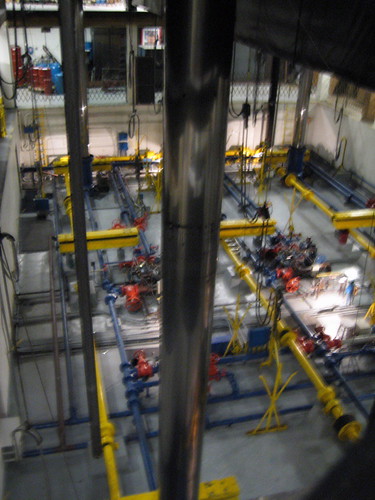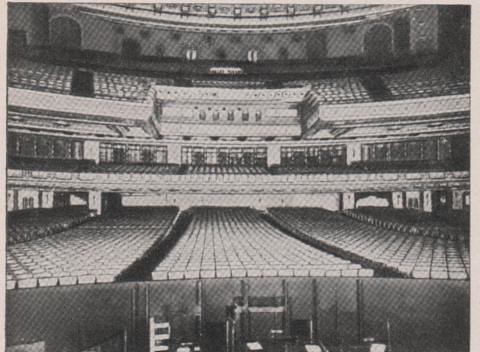 Hydraulic stages are both a blessing and a curse! I’ve played on them in a variety of venues, and while they’re usually a blessing for stage and pit logistics in multi-use halls, they can yield some amusing (and potentially disastrous) unintended results.
Hydraulic stages are both a blessing and a curse! I’ve played on them in a variety of venues, and while they’re usually a blessing for stage and pit logistics in multi-use halls, they can yield some amusing (and potentially disastrous) unintended results.
Up, down, up, down…
I have played performances with a variety of groups in Milwaukee’s Uihlein Hall over the years, but most of these performances have been with the Milwaukee Ballet. This hall has a hydraulic stage, which is raised for full symphonic performances and lowered in the front for ballet and opera performances.
For many years, this stage would do these funny little readjustments throughout the course for a concert, like a little earthquake under one’s chair. I recall many instances where I’d give a little start as I felt the stage quiver and readjust itself upward.
Guess what happened?
The Milwaukee Ballet Orchestra was playing a prickly modern piano concerto for a series several years ago, and the piano was down in the pit with us, nestled right up against the conductor’s podium. We were particularly cramped in the pit for that run (not that we ever have a ton of room down there–and we’re a small orchestra!).
One evening, mere seconds after the conductor had given the downbeat for the beginning of the first movement, the entire front half of the pit abruptly dropped about two inches. The other half of the orchestra was on a concrete surface behind the hydraulic pit and didn’t budge an inch.
Dropping a few inches down at the start of a difficult concerto is enough to throw anyone off, but to make matters worse, many musicians had their stands and chairs right on the crack between stage and concrete, causing utter pandemonium in the pit. Stands began tipping over, violinists looked like they were about to fall into each other like a row of dominoes, and a sudden panicky flurry of activity erupted as folks tried to readjust stands, pick up fallen music, and move their chairs onto flat surfaces.
Pandemonium in the pit
The conductor, eyes wide with surprise (probably thinking that his might downbeat had sent us all plummeting into the depths), kept conducting, and though much of the opening section of the concerto ended up featuring only piano (our soloist didn’t even flinch as the piano dropped those couple of inches–what a pro!) and the woodwinds that escaped the hairy plummet.
Nothing like the fear of an orchestra collectively falling to its death to rally the troops and get the blood pumping. The rest of the performance was full of energy and actually better than the rest of the run!
Down, down, down, down…
 This slight stage burble (at an unfortunate time) is not the only time that this hydraulic stage has messed with a performance. I recall a popular story from Milwaukee Symphony folklore about this very stage (feel free to chime in with any corrections, Milwaukee Symphony folks–this is coming to me second or third hand).
This slight stage burble (at an unfortunate time) is not the only time that this hydraulic stage has messed with a performance. I recall a popular story from Milwaukee Symphony folklore about this very stage (feel free to chime in with any corrections, Milwaukee Symphony folks–this is coming to me second or third hand).
Apparently, during the middle of a Milwaukee Symphony concert, the entire front section of the orchestra (including the conductor!) began to descend into the darkness below the stage. The orchestra members closest to the lip of the stage played on like musicians on the deck of the Titanic as they slowly sank underneath the stage, disappearing from audience view…
Photo credits:
Bass News Right To Your Inbox!
Subscribe to get our weekly newsletter covering the double bass world.
